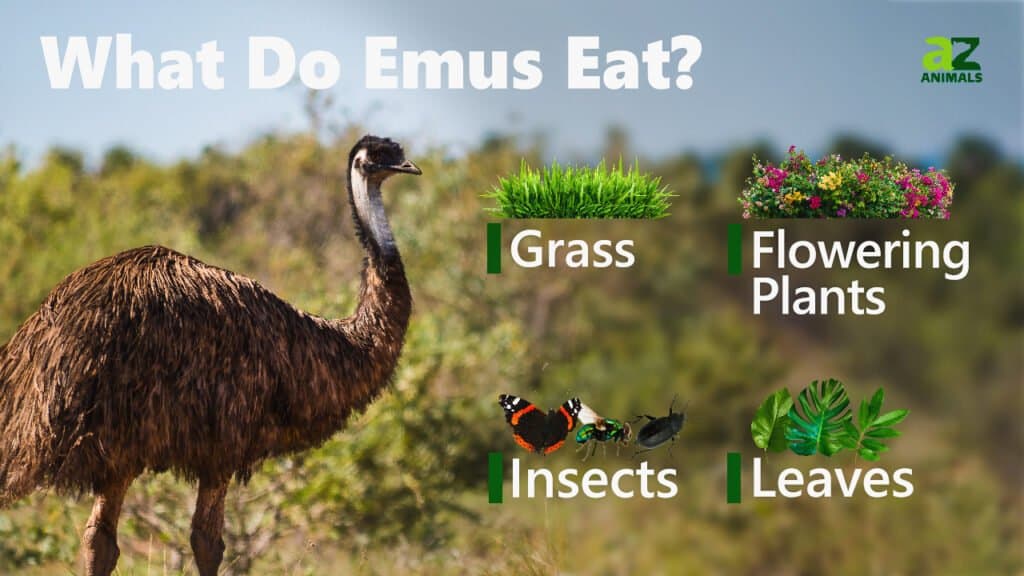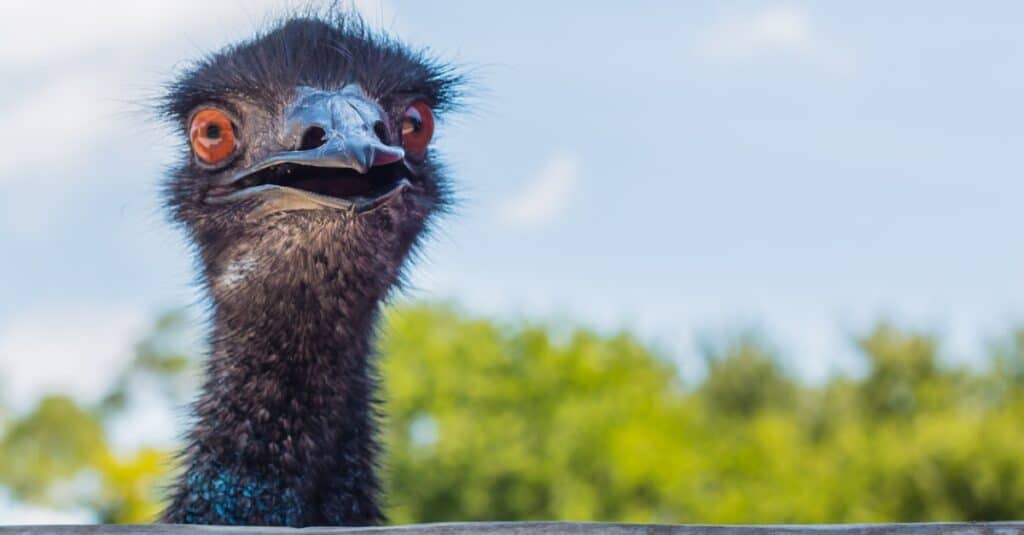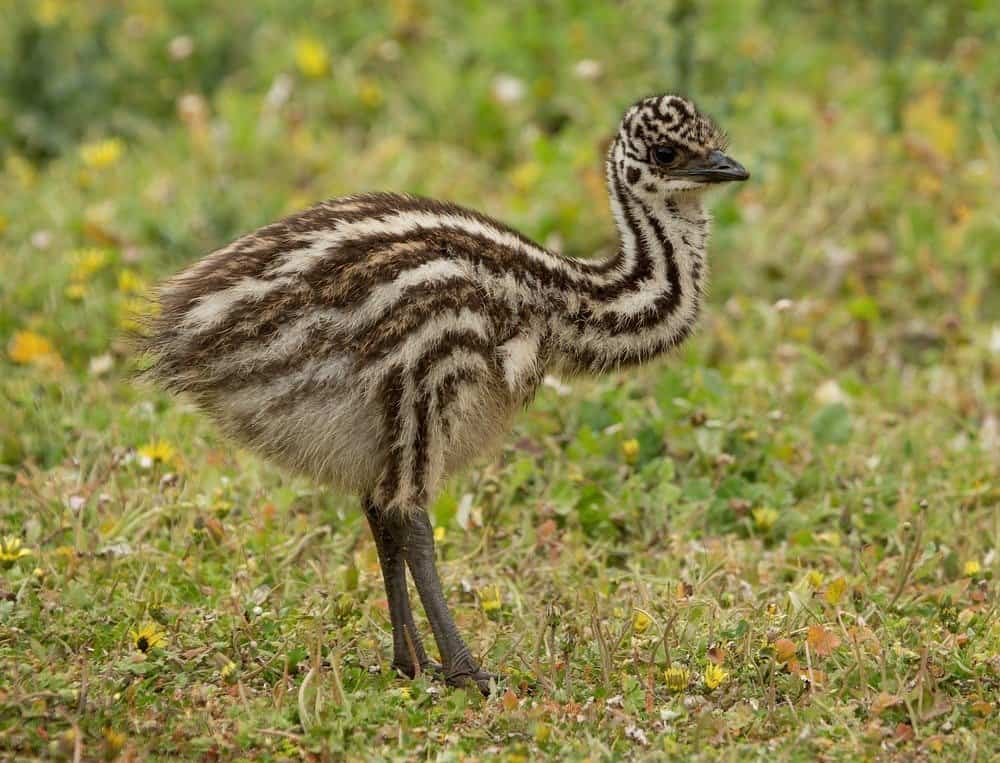Emus are large birds from Australia that are frequently confused with similar-looking ostriches. Averaging a height of 6.2 feet, running at 25 miles per hour, and possessing some very sharp claws, emus almost resemble predators. That begs the question, what do emus eat?
Surprisingly, you will not find many living creatures on the list of emus preferred meals. We will explore the emu’s diet and show you what they eat and why you should still keep your distance if you encounter one in the wild.
What Foods Do Emus Eat?

Emus eat seeds, grass, and insects for most of their diet. Emus are omnivores, but they tend to be more herbivorous than carnivorous. These large birds are very opportunistic since they live in Oceania, a somewhat inhospitable natural environment. They will consume a variety of foods that they come across, even if it means picking them from another animal’s droppings.
Summary of the most common foods that emus will eat:
| Rank | Food |
|---|---|
| 1 | Acacia |
| 2 | Casuarina |
| 3 | Grass seeds |
| 4 | Various tree seeds |
| 5 | Sunflower seeds |
| 6 | Corn |
| 7 | Beetles |
| 8 | Ants |
| 9 | Flies |
| 10 | Grasshoppers |
| 11 | Spiders |
| 12 | Centipedes |
| 13 | Numerous fruits |
| 14 | Small rodents |
| 15 | Lizards |
Emus have a high preference for seeds, grasses, and other food that is abundant and easy to find. It is easier and less hazardous for them to seek out and eat these meals. These birds also have a somewhat high protein requirement, between 15% and 20% of their diet. That is why they will opt for insects and other high-protein creatures to ingest as part of their diet.
Emus have a good sense of danger about them, so they will avoid eating creatures that can harm them, like snakes, even if they are capable of killing them. They do eat lizards on occasion as well as small rodents that do not pose a significant threat to them.
How Do Emus Forage?

Emus have a high protein requirement that’s between 15% and 20% of their calories.
©iStock.com/SherryVSmith_Images
Emus live in a tough environment where they sometimes travel between 9 and 15 miles each day in search of food and water. They are frequently on the lookout for their preferred foods, but they sometimes must pick undigested seeds from their own droppings and other animals’ droppings for energy.
They spend a lot of their time foraging, picking at the ground with their beaks and claws to find choice bits of food and uncover insects from beneath rocks.
Interestingly, emus do not have any teeth with which to grind their food. As a result, they will swallow small rocks that linger in their gizzard. As they eat food, these pebbles grind up the meal so that it can be properly digested.
Their foraging habits have an unintended side effect of spreading seeds across Australia, sometimes to the detriment of the environment such as when they spread a form of cactus around the nation.
How Much Do Emus Need to Eat?
Emus spend a lot of their lives foraging, and they regularly lose significant portions of their body weight while searching for food supplies. When they discover a food supply in the wild, they will eat and pack on extra fat and begin their search for food again.
When they live in captivity, emus do not need to eat a lot. On average, an adult emu will weigh between 70 and 80 pounds, with males tipping the scale over 100 pounds. When consuming a diet of food pellets, they will frequently only eat about 1.5 pounds of food each day.
When emus are kept in captivity, it is simple to supply enough food for their diet.
What Do Emus Eat in the Winter?

In the winter, emus eat more plants as insects aren’t as common.
©K.A.Willis/Shutterstock.com
Australia, the country with the highest population of emus, has a large variety of climate zones owing to its large size. The temperature and weather changes that occur throughout the year cause emus to live a nomadic lifestyle as they pursue food.
In the winter, emus will travel to the warmer spots in the country and their diet will become more plant-based due to the fewer opportunities to consume insects. They’ll focus on eating herbs, new grasses, and flowers as well as seeds.
What Are the Emus’ Predators?
Emus are very large birds, with only the ostrich standing taller than them. They can reach heights of between 59 and 75 inches. That makes them about as tall as most people, but much of that is their neck and legs. They use their size, speed, and claws that reach 4 inches in length to fend off predators. Needless to say, these birds can tear some animals to shreds.
Nevertheless, emus, especially the young and very old, are targets for a few predators. The following animals present the most danger to emus:
- Dingoes
- Wedge-tailed eagles
- Foxes
- Snakes
- Monitor lizards
- Domestic and wild dogs
- Pigs
- Human beings
Of these predators, dingoes, wedge-tailed eagles, and human beings are the most dangerous and capable of killing an adult emu. The others might get lucky killing a young emu or consuming their eggs.
As with many animals in Australia, human beings present a threat to emus. Aside from hunting and farming, emus are frequent victims of vehicles.
Are Emus Dangerous to People?
Emus are not overly aggressive and hostile towards human beings, but there have been cases where emus have attacked and hurt humans. Often, people are only attacked by emus when they get too close or when approaching a nesting parent. Emus have a strong response to apparent threats that get close to their young.
Emus will most frequently jump and use their long claws to scratch at potential threats, and that can cause serious injuries to human beings, although fatal encounters are rare and poorly documented.
In short, staying away from emus in the wild is a wise choice because they have the potential to be dangerous.
Emus are large birds that are often recognized for their dopey looks and the time humans waged an armed campaign against them. Although they might look like apex predators, the truth is that they are peaceful omnivores that only rarely eat anything other than plants and insects.
The photo featured at the top of this post is © Lukas_Vejrik/Shutterstock.com
Thank you for reading! Have some feedback for us? Contact the AZ Animals editorial team.






